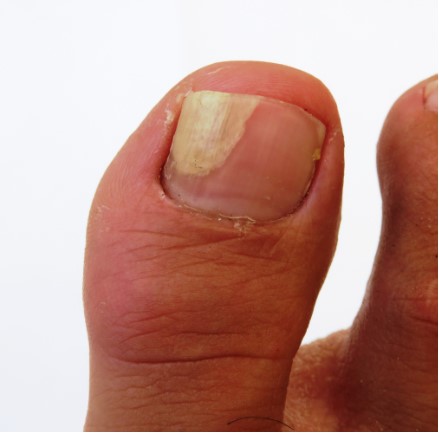What Are the Common Causes of Pus Under the Toenail?
What Are the Common Causes of Pus Under the Toenail?

Pus under the toenail can be both painful and alarming, often indicating an underlying issue that needs attention. This condition, known as subungual pus, can arise from various causes, each with its own set of symptoms and treatments. Understanding these causes can help in seeking appropriate care and preventing future occurrences.
Ingrown Toenail
One of the most common causes of pus under the toenail is an ingrown toenail. This condition occurs when the edge of the toenail grows into the surrounding skin, causing pain, swelling, and redness. The affected area can become infected, leading to the accumulation of pus. Ingrown toenails can be triggered by improper nail trimming, wearing tight shoes, or genetic predisposition.
Prevention and Treatment:
- Proper Nail Trimming: Trim your toenails straight across rather than rounded edges to prevent them from growing into the skin.
- Footwear: Wear well-fitting shoes that do not put pressure on your toes.
- Soaking: Regularly soak your feet in warm, soapy water to reduce swelling and soften the nail.
Fungal Infections
Fungal infections, such as onychomycosis, can also cause pus under the toenail. Fungi thrive in warm, moist environments, making toenails an ideal breeding ground. Symptoms of a fungal infection include thickened nails, discoloration, and a foul odor. As the infection progresses, pus may accumulate under the nail, leading to discomfort and pain.
Prevention and Treatment:
- Maintain Dry Feet: Keep your feet dry and clean. Change socks regularly and choose moisture-wicking materials.
- Antifungal Treatments: Over-the-counter antifungal creams and prescription medications can help treat fungal infections.
- Consult a Specialist: In severe cases, a podiatrist might recommend oral antifungal medication or nail removal.
Trauma or Injury
Trauma to the toenail, such as from dropping a heavy object or stubbing your toe, can lead to bleeding and pus formation. An injury can cause the toenail to separate from the nail bed, allowing bacteria to enter and cause an infection. This condition is often accompanied by swelling, pain, and discoloration.
Prevention and Treatment:
- Protect Your Feet: Wear appropriate footwear to avoid injuries.
- Clean and Dress Wounds: If you injure your toenail, clean the area thoroughly and apply a sterile bandage.
- Seek Medical Advice: For severe injuries, especially if pus is present, consult a healthcare provider for appropriate treatment.
Bacterial Infections
Bacterial infections can also lead to pus under the toenail. Common bacteria, such as Staphylococcus or Streptococcus, can invade the nail area through small cuts or cracks. Symptoms of a bacterial infection include redness, swelling, warmth, and pus formation.
Prevention and Treatment:
- Good Hygiene: Maintain good foot hygiene to prevent infections. Keep your feet clean and dry.
- Antibiotics: For bacterial infections, topical or oral antibiotics may be prescribed by a healthcare provider.
- Medical Evaluation: If symptoms persist or worsen, seek medical attention to avoid complications.
Paronychia
Paronychia is an infection of the skin around the toenail, often caused by bacteria or fungi. This condition can result in pus accumulation beneath the nail, alongside symptoms like swelling, redness, and pain. Paronychia can be acute or chronic, with the acute form often following an injury or bite to the nail area.
Prevention and Treatment:
- Avoid Nail Biting: Prevent infection by avoiding nail biting or picking at the skin around the nails.
- Antiseptic Care: Clean the affected area with antiseptic solutions and apply topical antibiotics.
- Professional Treatment: Chronic paronychia may require professional treatment, including draining the infection and using more potent antifungal or antibacterial agents.
How to Heal a Toe Infection
How to Heal a Toe Infection: Healing a toe infection involves a combination of self-care measures and professional medical treatment. Here’s a comprehensive approach to managing and healing a toe infection:
- Clean the Area: Gently clean the infected area with soap and water. Avoid using harsh chemicals that could further irritate the skin.
- Apply Antiseptic: Use an antiseptic solution to reduce the risk of further infection.
- Use Antibiotic Ointments: Over-the-counter antibiotic ointments can help treat bacterial infections.
- Soak Your Feet: Regularly soak your feet in warm, soapy water to reduce swelling and pain.
- Protect the Toe: Keep the infected area covered with a sterile bandage to prevent dirt and bacteria from entering.
- Seek Medical Attention: If the infection doesn’t improve or shows signs of worsening, consult a healthcare professional for further evaluation and treatment.
In conclusion, pus under the toenail can be caused by various factors, including ingrown toenails, fungal infections, trauma, bacterial infections, and paronychia. Proper hygiene, appropriate footwear, and timely medical intervention are key to managing and preventing these conditions. For those experiencing persistent issues, seeking specialized care is crucial. If you are in Scottsdale, AZ, and need professional help, consider visiting a local clinic for expert toe infection treatment in Scottsdale, AZ to address your concerns effectively.
